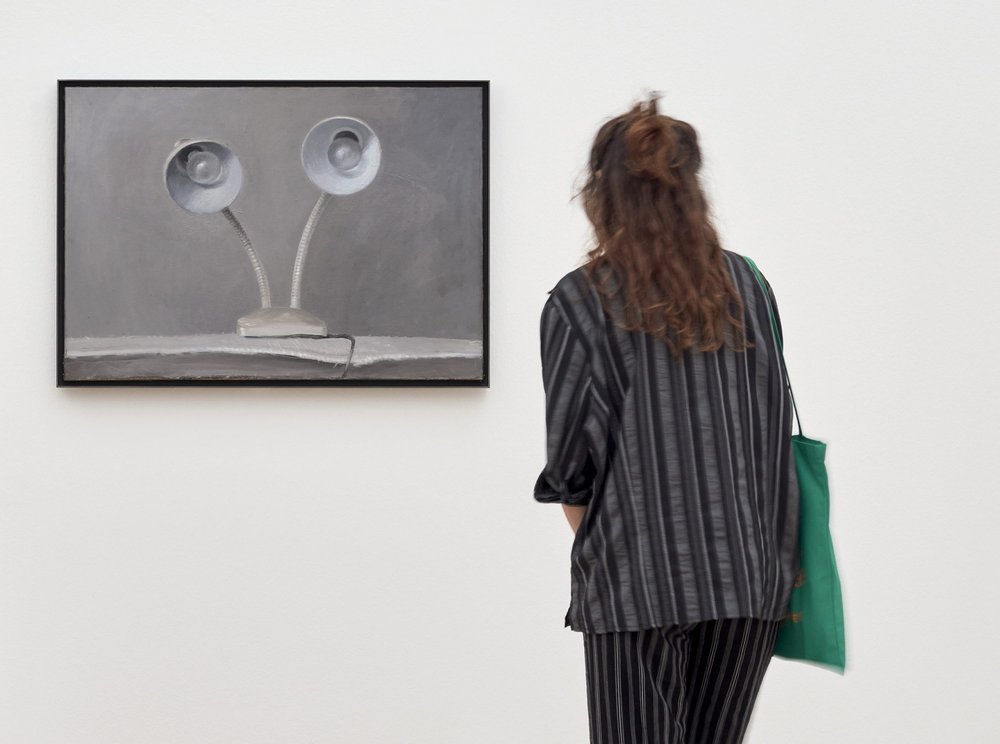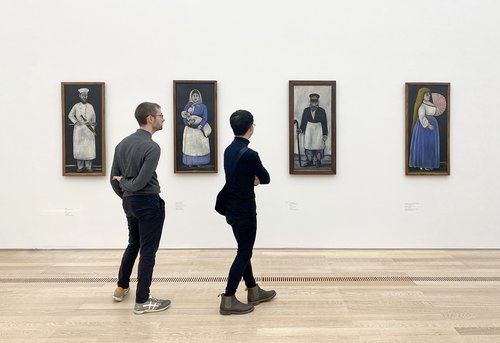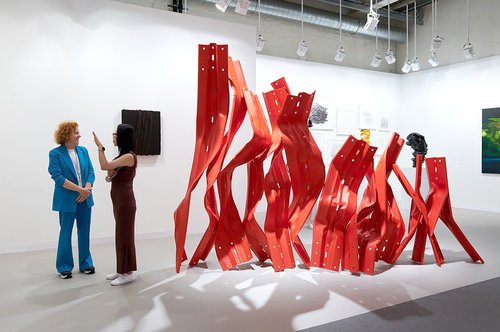Vija Celmins’ Snowfall in Latvia

Vija Celmins. Exhibition view. Fondation Beyeler. Riehen/Basel, 2025. Photo by Mark Niedermann. Courtesy of Vija Celmins, Matthew Marks Gallery and Fondation Beyeler
The art of Vija Celmins is a sanctuary in our turbulent times, shorn from her own childhood as a refugee from Latvia and then as an immigrant settling in the USA. A large-scale solo exhibition of her work is currently on view at the Beyeler Foundation in Basel which shows how her work has evolved over the past six decades. Known for her disciplined, restrained monochromatic pictures, at the age of eighty-six is she creating her best work yet?
To say that Vija Celmins (b.1938) is not a prolific artist would be as understated as her art. Painting on average around five works every year, as you look at her art you must slow down to something like her pace, a challenge in our distracted times. Celmins (pronouned with the Latvian C, as ‘ts’) means tree trunk in Latvian, fitting for an artist who has made observations of nature, whether sky, sea, desert, a spider’s web, or a snowstorm the centre of an idiosyncratic artistic universe. Celmins is an internationally recognised artist today who has had many major solo exhibitions at museums around the world, including the Met Breuer in New York, SFMOMA in San Francisco, and the Centre Pompidou in Paris, as well as a dialogue show with Gerhard Richter at the Hamburger Kunsthalle in 2023. Often seen in the context of American photorealism, there is much more to Celmins’ work than first meets the eye.
Born in Riga in 1938, her childhood coincided with one of the most turbulent decades in the history of Latvia. Celmins’s mother was a laundress in a hospital, her father a bricklayer and during the 1940s they found themselves along with hundreds of thousands of their compatriots as refugees in a displaced persons camp before eventually leaving Europe for Indianapolis USA. Young Vija was ten years old; she used drawing to communicate as she learnt English in her adopted country. Adding to the traumas of displacement and war, her elder sister Inta had tuberculosis and was hospitalised many times leaving Vija to spend hours alone in what should have been their shared bedroom.
Celmins’ near contemporary the late Ilya Kabakov (1933-2023), who initially found himself on the opposite side of the iron curtain until he emigrated from the USSR in the 1980s, left a powerful image of what he called the ‘eternal immigrant’. The unique state of mind and body of someone who has settled in a new country, often for political reasons, is embodied in Kabakov’s imagination as a faceless person who has half scaled a wall, only to find him or herself divided, exhausted and caught in an endless and hopeless struggle never quite arriving in a new place or having fully left one’s homeland – how to escape this God forsaken inner divide?
Although Celmins herself writes that her work is not confessional nor political, this claim throws us off guard. From the mid 1960s there is a fascination with printed images from the Second World War and an early work in which she painted the envelope of a letter she received from her mother where instead of stamps with the heads of American presidents, there are images of bombs exploding. Then there is the ‘Burning Plane’ and ‘Time Magazine Cover’ (1965-66) paintings. It is hard not to see in these a reflection of her own memories or an attempt at understanding her childhood experiences in ugly, war-riddled Europe in which her family was torn from its roots.
The end of the 1960s marks a maturation of her own artistic language where two things happen in her work. She gives up using both colour and oil paints and from now on with some exceptions she exclusively draws only using a pencil, until the late 1970s. It was a radical step. It was not the nascent glamorous advertising industry with its bold and brightly coloured repetative yet shortlived imaging that grabbed the attention of many contemporary artists in the US at that time (some of whom were immigrants from Eastern Europe like herself) instead for Celmins it was the human exploration of space, culminating in the iconic Apollo 11 Mission in 1969 and Neil Armstrong’s historic first step for mankind on the moon that excited her. That same year, Celmins created a series of drawings of the surface of the moon based on photos taken by NASA’s lunar probes.
It may be simplistic to say that in some way this achievement of man’s landing on the moon expanded her own horizons. But certainly, after the lunar landscapes there came a new turn in her art where she suddenly takes an interest in vast repetitive surfaces in nature, on an epic scale, especially deserts. This represents a clear break with her past, where her early oils had been influenced in part by an interest in European artists Georgio Morandi (1890-1964) and Diego Velazquez (1599-1660) whose work she had seen first hand. It is not so much that she removed herself from her subject (in early works she had faithfully painted objects in her own studio first hand), rather she set an impenetrable boundary between nature and herself. For unlike the great impressionists who painted landscapes en plein air, she selected printed images of nature made by latest technologies, like photographs made by the Hubble Space telescope and recreated them with a painstaking veracity in pencil on paper – or later paint - in her own studio. And these images of the night sky are alien for us, so deep in space, millions of light years from earth, they are devoid of the usual stellar constellations with which we are all familiar, their names often based on characters and creatures from Greek mythology.
On the one hand these works are about our own incomprehension in the face of the biggest questions of life and the universe. And yet also this personal removal and distancing from the deepest images of space and biggest mysteries of the natural world, is about as extreme a dissociation or dislocation from reality as you might dream up. An uprooted tree, truncated, split off from nature, she fastidiously copies manufactured reproductions. So how is it that her art vibrates with life?
“It was too exciting for me to go straight from a sky” she said once in conversation with Anne Seymour for her solo show at the Anthony D’Offay Gallery in London about how she drew her night sky works from photographic images. One wonders if the slow, deliberate, controlled drawing of works such as her night skies have been a repeated attempt at gently channelling her darkest emotions about life, perhaps shaped by both her own childhood traumas, as well as her own enquiring and exploratory mind. It is as if Celmins accepts these works for what they are: closed, and inaccessible chapters of a big story of the universe of which we humans are only tiny figments. For decades, showing extreme perseverance, she repeats this same approach often mostly in black and white.
Yet in her eighties, there is a sense that Celmins might be creating the most personal and powerful, emotionally resonant work of her life. A recent series of paintings all titled ‘Snowfall’ depict snow falling at night culminating in the largest painting she has ever made – ‘Snowfall (blue)’ - which she worked on over two years from 2022 to 2024. Earlier this year taking to James Lingwood, curator of the show at the Beyeler Foundation, on her origins, Celmins spoke of “coming from Winter”. This beautiful painting, now in the collection of the Glenstone Museum in Washington D.C. resonates with the colour blue, when you look at it there is no longer a sense of remote wonder at the mysteries of our universe more just the feelings of excitement of a young girl in Latvia watching the first snow fall from her bedroom window at night.



















